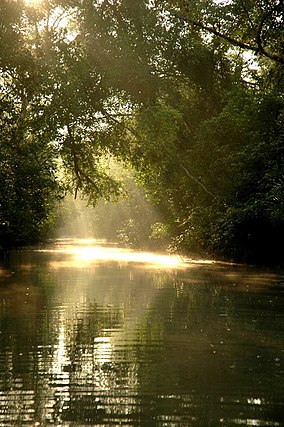It is located in Gowainghat Upazila of Sylhet District and situated at the border between Bangladesh and the Indian state of Meghalaya, overshadowed by subtropical mountains and rainforests. Jaflong is famous for its stone collections and is home of the Khasi tribe
Travel Zone
Travel Zone :
Thursday 10 January 2019
Jaflong
Jaflong (Bengali: জাফলং) is a hill station and popular tourist destination in the Division of Sylhet, Bangladesh.
It is located in Gowainghat Upazila of Sylhet District and situated at the border between Bangladesh and the Indian state of Meghalaya, overshadowed by subtropical mountains and rainforests. Jaflong is famous for its stone collections and is home of the Khasi tribe
source: wikipedia
It is located in Gowainghat Upazila of Sylhet District and situated at the border between Bangladesh and the Indian state of Meghalaya, overshadowed by subtropical mountains and rainforests. Jaflong is famous for its stone collections and is home of the Khasi tribe
Monday 7 January 2019
Rangamati; রাঙ্গামাটি
Rangamati (Bengali: রাঙ্গামাটি) is the administrative
headquarters of Rangamati Hill District in the Chittagong Hill Tracts. Kaptai lake, the hanging bridge and Pablakhali reserve forest are some of the notable locations to visit in Rangamati.
Wednesday 19 December 2018
St. Martin's Island

Dead corals at St. Martin's Island
St. Martin's Island (Bengali: সেন্ট মার্টিন্স দ্বীপ) is a small island (area only 8 km2) in the northeastern part of the Bay of Bengal, about 9 km south of the tip of the Cox's Bazar-Teknaf peninsula, and forming the southernmost part of Bangladesh. There is a small adjoining island that is separated at high tide, called Chhera island. It is about 8 km west of the northwest coast of Myanmar, at the mouth of the Naf River. The first settlement started just 250 years ago by some Arabian sailors who named the island 'Zajira'. During British occupation the island was named St. Martin Island. The local names of the island are "Narical Gingira", also spelled "Narikel Jinjira/Jinjera", which means 'Coconut Island' in Bengali, and "Daruchini Dip". It is the only coral island in Bangladesh.
The city of Chittagong has many high end, private hotels such as the Hotel Agrabad, the Hotel Well Park Residence, The Peninsula Chittagong, the Hotel Harbour View, the Hotel Meridian, and Avenue Hotels and Suites.
The JW Marriott, Westin and Radisson Blu are among the upcoming five-star hotels in Chittagong city.
source: wikipedia
Monday 17 December 2018
Cox's Bazar
Beach restaurant at Cox's Bazar
Cox's Bazar (Bengali: কক্সবাজার Kaksbajar) is a seaside town, a fishing port and district headquarters in Bangladesh. It is known for its wide and long sandy beach, which is considered by many as the world's longest natural sandy sea beach.[3][5] The beach in Cox's Bazar is an unbroken 125 kilometres (78 mi) sandy sea beach with a gentle slope. It is located 152 kilometres (94 mi) south of the Chittagong Seaport. Cox's Bazar is also known by the name Panowa, whose literal translation means "yellow flower". Its other old name was "Palongkee".
Friday 14 December 2018
sundarbon
| Sundarbans | |
|---|---|

Sun in the Sundarbans
| |
Location in Bangladesh
| |
| Location | Khulna Division, Bangladesh |
| Nearest city | Khulna, Satkhira, Bagerhat |
| Coordinates |  21°57′N 89°11′ECoordinates: 21°57′N 89°11′ECoordinates:  21°57′N 89°11′E 21°57′N 89°11′E |
| Governing body | Government of Bangladesh |
| UNESCO World Heritage Site | |
| Official name | The Sundarbans |
| Location | Khulna Division, Bangladesh |
| Includes | |
| Criteria | Natural: (ix)(x) |
| Reference | 798 |
| Inscription | 1997 (21st Session) |
| Area | 139,500 ha (539 sq mi) |
| Coordinates |  21°57′N 89°11′E 21°57′N 89°11′E |
| Designations | |
|---|---|
| Official name | Sundarbans Reserved Forest |
| Designated | 21 May 1992[1] |
The Sundarbans is a mangrove area in the delta formed by the confluence of Ganges, Brahmaputra and Meghna Rivers in the Bay of Bengal. It spans from the Hooghly River in India's state of West Bengal to the Baleswar River in Bangladesh. It comprises closed and open mangrove forests, agriculturally used land, mudflats and barren land, and is intersected by multiple tidal streams and channels. Four protected areas in the Sundarbans are enlisted as UNESCO World Heritage Sites, viz Sundarbans National Park, Sundarbans West, Sundarbans South and Sundarbans East Wildlife Sanctuaries.The Sundarbans mangrove forest covers an area of about 10,000 km2 (3,900 sq mi). In West Bengal, they extend over 4,260 km2 (1,640 sq mi) across the South 24 Parganas and North 24 Parganas districts.[3] Forests in Bangladesh’s Khulna Division extend over 6,017 km2 (2,323 sq mi). The most abundant tree species are Sundri (Heritiera fomes) and Gewa (Excoecaria agallocha). The forests provide habitat to 453 faunal wildlife, including 290 bird, 120 fish, 42 mammal, 35 reptile and eight amphibian species.
Despite a total ban on all killing or capture of wildlife other than fish and some invertebrates, it appears that there is a consistent pattern of depleted biodiversity or loss of species in the 20th century, and that the ecological quality of the forest is declining.[citation needed] The Directorate of Forest is responsible for the administration and management of Sundarban National Park in West Bengal. In Bangladesh, a new Forest Circle was created in 1993 to preserve the forest, and Chief Conservators of Forests have been posted since. Despite preservation commitments from both Governments, the Sunderbans are under threat from both natural and human-made causes. In 2007, the landfall of Cyclone Sidr damaged around 40% of the Sundarbans. The forest is also suffering from increased salinity due to rising sea levels and reduced freshwater supply. The proposed coal-fired Rampal power station situated 14 km (8.7 mi) north of the Sundarbans at Rampal Upazila of Bagerhat District in Khulna, Bangladesh is anticipated to further damage this unique mangrove forest according to a 2016 report by UNESCO.
Subscribe to:
Posts (Atom)





